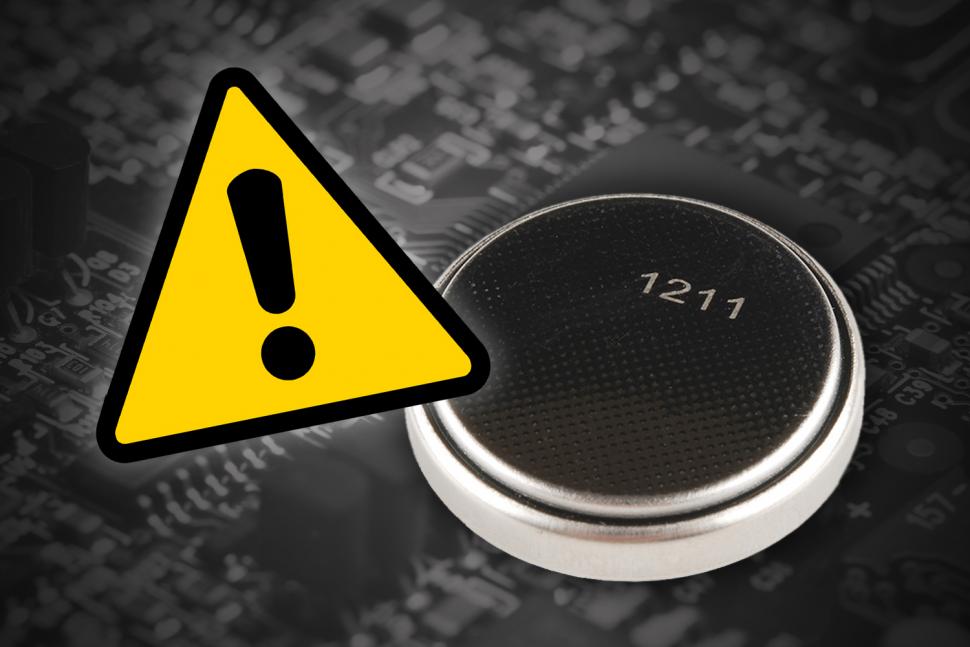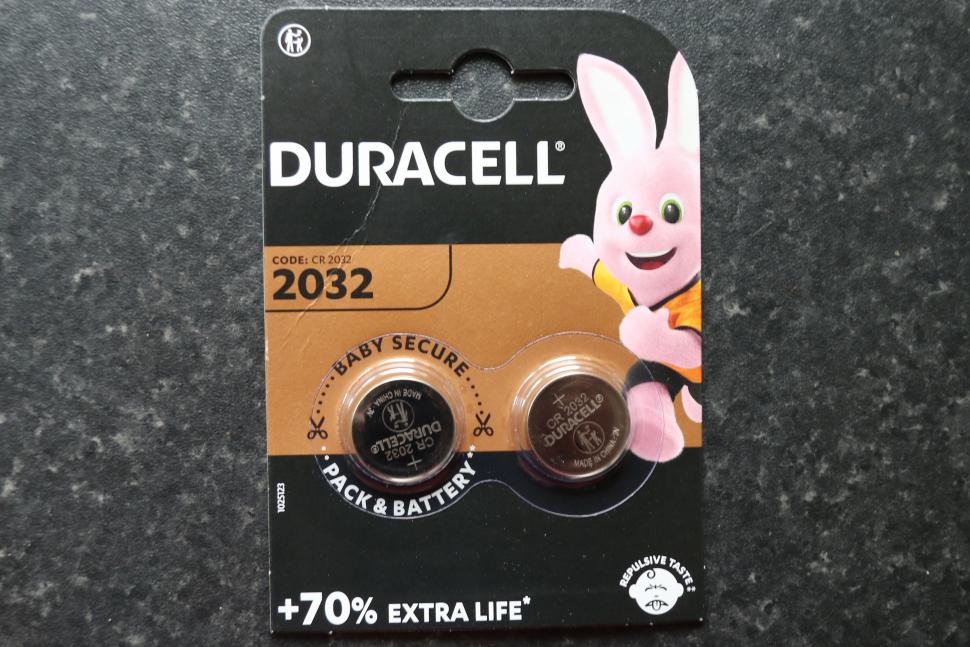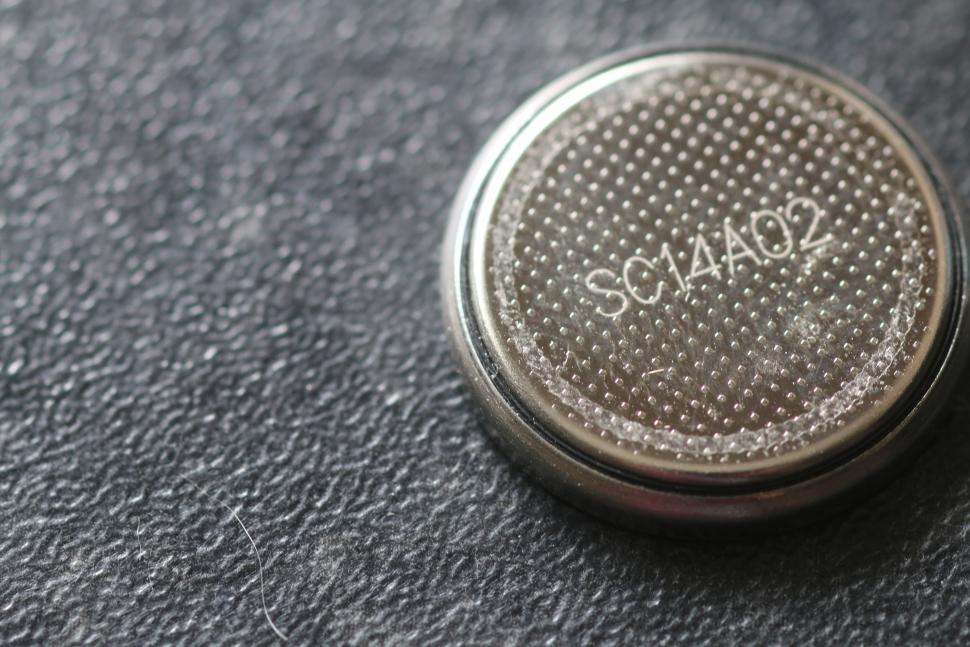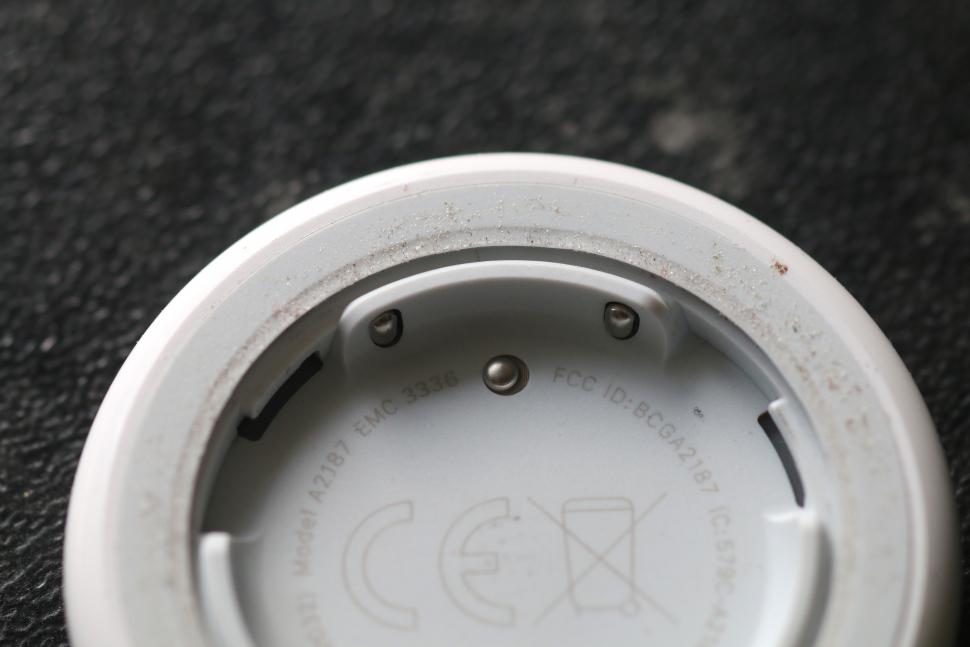- News
- Reviews
- Bikes
- Components
- Bar tape & grips
- Bottom brackets
- Brake & gear cables
- Brake & STI levers
- Brake pads & spares
- Brakes
- Cassettes & freewheels
- Chains
- Chainsets & chainrings
- Derailleurs - front
- Derailleurs - rear
- Forks
- Gear levers & shifters
- Groupsets
- Handlebars & extensions
- Headsets
- Hubs
- Inner tubes
- Pedals
- Quick releases & skewers
- Saddles
- Seatposts
- Stems
- Wheels
- Tyres
- Tubeless valves
- Accessories
- Accessories - misc
- Computer mounts
- Bags
- Bar ends
- Bike bags & cases
- Bottle cages
- Bottles
- Cameras
- Car racks
- Child seats
- Computers
- Glasses
- GPS units
- Helmets
- Lights - front
- Lights - rear
- Lights - sets
- Locks
- Mirrors
- Mudguards
- Racks
- Pumps & CO2 inflators
- Puncture kits
- Reflectives
- Smart watches
- Stands and racks
- Trailers
- Clothing
- Health, fitness and nutrition
- Tools and workshop
- Miscellaneous
- Buyers Guides
- Features
- Forum
- Recommends
- Podcast
OPINION
Can Duracell's kid-friendly batteries stop your cycling devices working?
 Coin Battery Sept 2022
Coin Battery Sept 2022If you’ve got a low-power device that uses three-volt CR2032 coin batteries, check exactly where its connectors are before you buy these Duracells to power it.
You might have heard reports that Duracell coin batteries don’t work in some devices. The good news is that they do in fact work in most of the cycling devices I tried, and it’s fairly easy to tell whether or not they’ll work in yours. But first, a bit of background.
Coin batteries are everywhere these days. You find them in car keys, kitchen scales, laser pointers, computer motherboards, calculators, electronic toys, bank card readers, watches, Apple Airtags and probably a load of other applications I haven’t thought of. In cycling, they power tiny blinky lights, computers, electronic shifters, power meters, pressure gauges, heart rate monitors, and cadence and speed sensors, among other things.
But there’s a problem. Because they’re small and shiny, coin batteries are attractive to little kids when they’re at the stage of exploring the world by finding out how everything tastes. They’re easy for an inquisitive toddler to accidentally swallow, with dire consequences. Electricity from the battery reacts with bodily fluids to cause burns in the oesophagus or stomach which can be fatal. This is not a health and safety gone mad, nanny state theoretical problem. Kids have died after ingesting coin batteries.
To deter kids from eating them, Duracell coats coin batteries with Bitrex. As the name suggests this is an extremely bitter-tasting chemical, denatonium benzoate. In fact, it’s the bitterest substance known to man, triggering no fewer than eight of your bitterness taste detectors and inspiring anyone with a working sense of taste to spit out whatever it’s coated with.
Props to Duracell for protecting young ’uns, then (for patenting the process so other battery makers can’t also make their coin batteries less attractive to kids, not so much). However, anything used as a coating on a coin battery can reduce its ability to deliver electricity, and that might cause problems.
Devices like heart rate monitors, power meters and the Apple Airtags many of us use as anti-theft devices don’t draw a lot of power. The low internal resistance of lithium-chemistry coin batteries makes them ideal for these applications as your device can sip a tiny amount of current from them for a long time. But the Bitrex coating on Duracells can stop them supplying enough power.
I first came across this problem in an article by Josh Centers on the TidBits email newsletter, which covers all things related to Apple devices. Josh’s early Airtags needed new batteries, but he found the Duracells he bought just didn’t work.
The problem cropped up in a cycling context when Twitter user Tom Jones aka @FamilyByCycle posted that he’d bought a Duracell CR2032 to power his 4iiii power meter but it didn’t work. He subsequently found that a “cheap Tesco one worked”. Aha! I thought, that’ll be the Bitrex coating then.
To see how widespread the problem is, I bought a couple of Duracell CR2032s and tried them in various devices. I could only replicate the problem with an Apple Airtag. Various lights and on-bike sensors all worked fine, as did a VDO bike computer I had kicking around from the late Iron Age. (Seriously, this thing has a wired sensor; PocketLint reviewed it in 2004. I have no idea why I still have it. [Because you’re a terrible packrat – Ed.]) Several heart rate monitors worked too, including two of Garmin’s despite Garmin also warning about Bitrex-coated Duracells.
What’s going on?
The Bitrex coating on a Duracell coin battery doesn’t cover the whole battery or even all of one side. Instead, as you can see in this image taken with my trusty macro lens, the coating is in a ring on the negative side of the battery. That just happens to be exactly where Apple has put the contacts in an Airtag. The other eight devices I tried all have the negative contact in the middle.
I don’t have a 4iiii power meter to test, but videos online showing how to replace the battery show the negative terminals in the middle of the battery compartment, so it’s a bit of a mystery why Tom had a problem. This video even shows a successful replacement with a Duracell CR2032 . It’s just possible I went off down this battery-swapping rabbit hole because one Twitterer was unlucky enough to get a dud battery, but hey ho, I learned stuff and I hope you did too.
The bottom line then is if you’ve got kids and want to deter them from eating your coin batteries, check that the negative connector is in the middle and if it is, go ahead and choose Duracell.
John has been writing about bikes and cycling for over 30 years since discovering that people were mug enough to pay him for it rather than expecting him to do an honest day's work.
He was heavily involved in the mountain bike boom of the late 1980s as a racer, team manager and race promoter, and that led to writing for Mountain Biking UK magazine shortly after its inception. He got the gig by phoning up the editor and telling him the magazine was rubbish and he could do better. Rather than telling him to get lost, MBUK editor Tym Manley called John’s bluff and the rest is history.
Since then he has worked on MTB Pro magazine and was editor of Maximum Mountain Bike and Australian Mountain Bike magazines, before switching to the web in 2000 to work for CyclingNews.com. Along with road.cc founder Tony Farrelly, John was on the launch team for BikeRadar.com and subsequently became editor in chief of Future Publishing’s group of cycling magazines and websites, including Cycling Plus, MBUK, What Mountain Bike and Procycling.
John has also written for Cyclist magazine, edited the BikeMagic website and was founding editor of TotalWomensCycling.com before handing over to someone far more representative of the site's main audience.
He joined road.cc in 2013. He lives in Cambridge where the lack of hills is more than made up for by the headwinds.
More Opinion
Latest Comments
- EK Spinner 36 min 5 sec ago
i would hazard a suggestion that if the first car had waited patiently (rather than making a closeish pass whilst overtaking adjacent to a junction...
- chrisonabike 48 min 58 sec ago
You're right - there's not space to get a dustpan and brush in there, never mind a broom....
- slc 1 hour 3 min ago
Agreed, there was no supension. There were various modifications of the plan, and a long time before the Beafort Rd and Crews Hole Rd one way plan...
- mitsky 1 hour 57 min ago
"In October, a judge ruled that one of the suspects Jesus Ayala was incompetent to stand trial and he was sent to a maximum security psychiatric...
- mark1a 2 hours 31 min ago
The Clandestine Entrant Civil Penalty Scheme was brought in as part of the Immigration and Asylum Act 1999 by the Blair government, fucking tories eh?
- Geoff H 3 hours 2 min ago
My only use for a camera is for "evidence". I only check it (& check before and after every ride) to make sure it is working. While I have had...
- Velo-drone 4 hours 59 min ago
I don't see anything in what they said to suggest that they even think about 3rd party reporting of dangerous driving as being part of the picture...
- Paul J 5 hours 7 sec ago
40k, 55k, 71k, 83k and 72k over 5 days, while riding between winerys (lunch and dinner) it seems. Let's just say this is not aimed at.... the GC...
- ROOTminus1 5 hours 28 min ago
A paragon of virtue when compared to the likes of FIFA and the FIA. But that's like comparing genital herpes to necrotising fascitis, there are no...
- chrisonabike 5 hours 46 min ago
Hmm... I think that needs tweaking. People do get passionate about keeping local things, but:...




Add new comment
16 comments
I stopped using Duracell CR2032 (and CR2025) coin batteries a long time ago. They are massively overpriced and I can literally get loads more for the same price as Duracells and they work just fine.
Last brand I bought were Maxell (owned by Hitachi) and I paid about £4 for ten on ebay and they have lasted for ages, why waste money.
Among winteroadies (winter roadies) like myself it's generally considered that Duracell are the only cadence meter batteries that work below -5° C. This is on Sigma and Wahoo sensors, mostly
I'm going to go home and see if this is the reason why I haven't been able to get my proprietry giant cadence sensor working for the past 18months.. if it is, i'm going to be quite annoyed.
Yes, that'd be a bitter pill to swallow.
(Sorry, that's in bad taste.)
quite a giant one in fact.
That's a terrible joke. If you told that joke in person, I think I'd be charged with battery and chucked in a cell.
... I'll get my coat
How bitter can it be, I must find out
I can't believe it's not bitter
Well, you'd bitter believe it.
Mine's a pint..
I work in a lab and we occasionally test this stuff. It's "open the container at arm's length and get a horrible taste in your mouth that lingers for ages" bitter.
ha ha ha, my sentment too... I'm going home tonight to raid my ever growing dead battery collection (must dispose of that at some point), for a taste!
I get that this is just a marketing thing (so that they can put baby secure on the pack), but patenting it just shows that it's profit and not babies' health that they care about. I'd rather they just focussed on making batteries and warn consumers to not leave them within reach of children, but instead they've got the worst plastic package to open - I can't open them without at least a minute's worth of scissoring(!).
I haven't actually tried this as I have neither an AirTag or a Duracell Bitrex battery to try it with, but it ought to work. Take a sharp knife or a small metal file and scrape away a small section of the bitrex coating. Remove just the bitrex, and make sure it is an area at least big enough to ensure that it covers the battery contact. Then fit the battery in position so that the area you have scraped clean above the contact. I have cleaned up old partially corroded batteries (not ones that have leaked BTW) when they have been left in a device somewhere damp for a long period, and you can usually restore proper conductivity.
Be careful not to short across the two halves of the case with that metal tool! I'd try removing it with solvent first, then maybe emory cloth.
I bet a quick spray of some chain degreaser on it would get rid of it